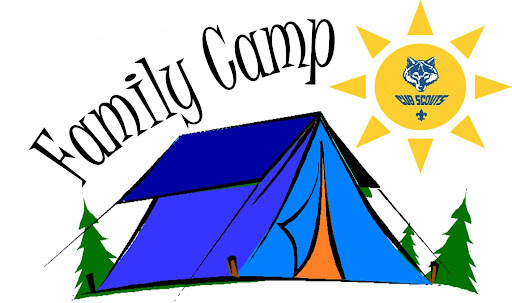This document is to explain what a first-time camper with Cub Scout Pack 417 needs to know. (the short answer is Very Little).

Signup and Costs
A group our size doesn’t go camping on a whim; instead it involves advanced planning and communication. Be sure that whenever we are camping there will be some amount of email and other communication with the details, including cost and other considerations. We typically try to plan 4 months ahead. The costs typically are for food, and/or if there is an activity fee. The Council sets the registration fee for each attendee, and we usually charge $8 for food.
Note also that our camping is not a catered event; any and all work in camping is done by us. Therefore, all adults will be given a spot on a duty roster. Depending upon the situation, we try to include scouts in this as well. Proper supervision is provided by seasoned pack adults who understand how the gear, etc operates.
Gear
Scouts (and adults) get all excited about buying camping gear. The fact of the matter is, a lot of camping gear you see out there YOU JUST DON’T NEED for Cub Scout camping, because it’s family-friendly, and fairly close to wherever you parked the car. Here’s what you do need, all of which can be found at Wal-Mart/Academy (and borrowing is fine too):
- A tent with a decent rain fly (Get a little bigger then you need. A 3 man tent is literally 3 people sleeping shoulder to shoulder with a few inches between them.)
- A tarp or other vapor barrier for beneath the tent
- A sleeping bag rated to 40 degrees
- Some sort of camping mattress (if you prefer)
- A folding chair of some kind, just like you might take to a soccer game
- Flashlight, nothing fancy just so you can see as you walk to evening events
- A mess kit for each family member, this cuts down on paper waste
Notice I didn’t say things like “backpack, stove, lantern, axe, etc”, you don’t need these. The pack has a generous supply of gear, and we want to minimize and control the things that have flames and sharp edges.
Food
We camp as a pack and eat as pack. At signup time is when you can bring attention to any food allergies. We’ve had no problem working with special diets. Food in tents is an open invitation to bugs or other critters. Eating as a group helps to build group identity. We eat well when we camp, and even the pickiest eater works up an appetite.
Camping trips usually go from Friday evening to Sunday morning. Friday the arrival time varies based on each families schedule, so the Pack will not provide a dinner for Friday night, please either eat before you leave for the trip or eat on the way up. Sunday, since we leave by 9am the Pack will provide a small uncooked breakfast i.e. fruit, muffins etc.
Each family is responsible for their own snacks. Please make sure they don’t require refrigeration and can be carried around in your backpack as most of the day Saturday is spent at the various activities and will only be coming back to camp for lunch and dinner.
How to Stay Warm and Dry
The key to warmth is to stay dry. We do not deliberately camp in weather below 40 degrees, and if we do, we will re-emphasize how to stay warm. It’s important to recognize that it is easier to STAY WARM than it is to get warm.
Tent Considerations for Warm and Dry
The key to a warm and dry tent is to avoid water. That means the tent needs a good rain fly that covers the tent well and is stretched securely to shed water. Also, the tent should not be in a location where water would run under it in the event of rain.
Underneath the tent you need to put a tarp or some other sort of vapor barrier. Be sure that when the tent is set up that none of the tarp extends out from underneath the tent. This is because any water that comes down the would get on the tarp and run under the tent.
*IF* it does rain, the best thing you can do is stay in your tent, and keep everyone and everything from touching the walls. The tent will shed water just fine, but if you touch the walls you cause a capillary action, and then the game is all over.
NO HEAT SOURCES IN TENTS!
Personal Considerations for Warm and Dry
During the day or evening, this means to have adequate layers of clothing, including a hat and possibly gloves. When you set up your tent and spread out your sleeping bag, put a complete change of clothes (including underwear) in your bag. When you go to sleep, change all of your clothes, because they hold perspiration. If it’s colder than 50 degrees or so you may want to also wear a sock cap.
Do not put your face in your sleeping bag! When you exhale into the bag you are putting water vapor in the bag, which will in turn make you cold.
Also, rain ponchos are mixed blessing. They keep heat in, and repel water, but often times you sweat under them just as bad as if you were to be rained on.
